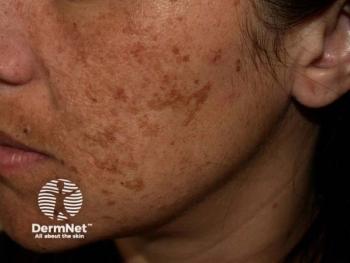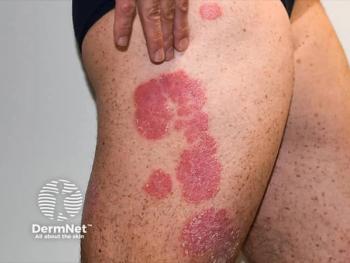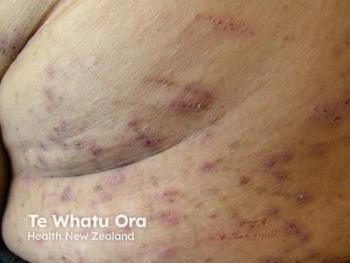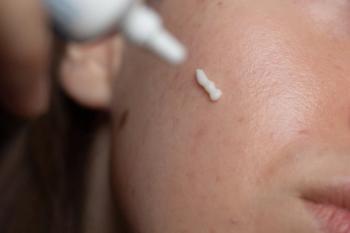
Q&A: Bridging the Gap in Dermatologic Care with a Provider-First Digital Solution
Key Takeaways
- Miiskin enhances dermatologic care access, efficiency, and patient-provider relationships through a digital platform, allowing more virtual patient management.
- The platform's user-friendly design improves patient engagement and understanding, particularly effective for conditions like hair loss.
Miiskin is transforming dermatologic care through telehealth, enhancing access, efficiency, and patient relationships, according to Ryan Trowbridge, MD, MS, MA, FAAD.
In today’s treatment landscape, timely access to dermatologic care remains a significant hurdle for millions of patients, often marked by long wait times, high costs, and limited specialist availability. To combat this, practices have been turning to
“Scheduling an in-person appointment with a dermatologist can take weeks or even months, and on average, can cost over $200 per visit. This puts care out of reach for many, especially those with busy schedules,” Jon Friis, founder and CEO of Miiskin, said in a statement. "Unlike many platforms, our doctors can guide patients through a full care plan and prescribe what’s legitimately needed, not just compounded options. We’re proud to offer timely, reliable, and affordable solutions to improve access to skin health for everyone.”
At the forefront of this transformation is Ryan Trowbridge, MD, MS, MA, FAAD, a board-certified dermatologist, micrographic surgeon, and founder of
Q&A:
Dermatology Times: Since integrating Miiskin into your practice, how has it impacted your daily workflow, efficiency, and overall practice management?
Trowbridge: Miiskin has opened the door to more innovative, patient-centered models of care that I haven’t previously explored due to EHR limitations in traditional settings. While teledermatology is a small piece of my overall practice because of time restraints and balancing my in-person roster of patients, it’s proven to be both efficient and safe when implemented thoughtfully through a secure, user-friendly platform. This model opens up opportunities to deliver care in a more streamlined, intuitive way. Through Miiskin, I’ve been able to see a significant number of additional patients per month virtually. It enables me to run a completely independent virtual practice, integrate it flexibly into my schedule, and expand access to care in the way I’ve always envisioned.
Dermatology Times: Why is Miiskin beneficial for efficient virtual care delivery and patient relationship building? What makes it user-friendly for both clinicians and patients?
Trowbridge: The platform really shines in how it packages virtual consults. From image capture to patient input, everything is structured in a way that’s easy for providers to navigate and respond thoughtfully. The ease of use makes a huge difference, especially when compared to larger systems, which aren’t designed for this kind of interaction. Patients also benefit from the clarity and control they have when engaging through Miiskin. They have space to ask questions, revisit instructions, and better understand their care plan. I’ve seen greater patient comprehension through the virtual care model compared to in-person, which ultimately builds trust and improves the patient-provider relationship.
Dermatology Times: How do you see Miiskin contributing to the long-term growth and success of your own practice? Are there specific types of cases, conditions, or patient demographics where you find Miiskin particularly effective?
Trowbridge: One unexpected benefit has been how educational this model is for both me and the patient. The structured, asynchronous nature of digital care encourages more thoughtful communication and deeper engagement on both sides. I’ve found Miiskin particularly effective for hair loss cases. It tends to attract well-informed patients who are seeking targeted support, which leads to more meaningful conversations. The need to support my recommendations with strong clinical literature has refined my approach and positively impacted how I deliver care in-person as well. I see this kind of virtual care model as a long-term tool for enhancing not just access, but the overall quality of dermatologic care.
Dermatology Times: As Miiskin aims to bring accessible dermatological care to 100 million people by 2040, what do you think the biggest challenges and opportunities are in achieving such an ambitious goal through telehealth?
Trowbridge: The biggest challenge in reaching that goal is adoption, particularly among dermatologists. There is still a lot of hesitation around virtual care models, mainly because they are viewed as less profitable to in-person visits. And that makes sense because most dermatologists already have full schedules but focusing only on what's most profitable today risks missing where the field is heading. Teledermatology is no longer a last resort. It is quickly becoming the preferred entry point for care, especially for patients who want convenience without sacrificing quality. Over the next 5 to 10 years, I believe that most patient interactions will begin virtually. Even if reimbursement continues to lag, this model offers a better way to engage with patients, solve problems, and deliver care efficiently. Platforms like Miiskin have a real opportunity to become a primary point of access in dermatology.
Dermatology Times: What advice would you offer to other dermatologists who are considering integrating a virtual care platform like Miiskin into their practice? What are some initial considerations?
Trowbridge: My advice is to start now. This is the direction the field is moving, and it is better to begin integrating virtual care on your own terms than to wait and have to catch up later. Even incorporating it into a small part of your practice can bring real benefits in terms of flexibility, access, and patient satisfaction. The learning curve is manageable, and these virtual platforms are designed to support a thoughtful, patient-centered approach from the beginning.
Dermatology Times: How does Miiskin compare to other virtual care models you might have encountered? Why should dermatologists choose this over other telehealth programs?
Trowbridge: The main difference is in the design - it’s built specifically for dermatology. Users can see this in everything from the way patient photos are collected to how consultations are presented to the provider. Unlike large EHR systems, Miiskin is streamlined, structured, and intuitive. That saves time and improves the quality of care. In addition, Miiskin allows dermatologists to remain independent and build their own practice in the way they wish, rather than working as a contracted dermatologist for another company. For dermatologists looking to make telehealth a real part of their practice, it’s a much more practical and effective solution.
Dermatology Times: Is there anything else you’d like to share with our audience of dermatological clinicians?
Trowbridge: I’d encourage clinicians to stay open to the evolving ways patients want to access care. Virtual platforms aren’t aiming to fully replace traditional practice; they’re focused on expanding what’s possible. Even small steps into digital care can enhance the way we connect with patients and deliver treatment. It’s a good time to explore what works for you and begin building that experience now.
Newsletter
Like what you’re reading? Subscribe to Dermatology Times for weekly updates on therapies, innovations, and real-world practice tips.


















